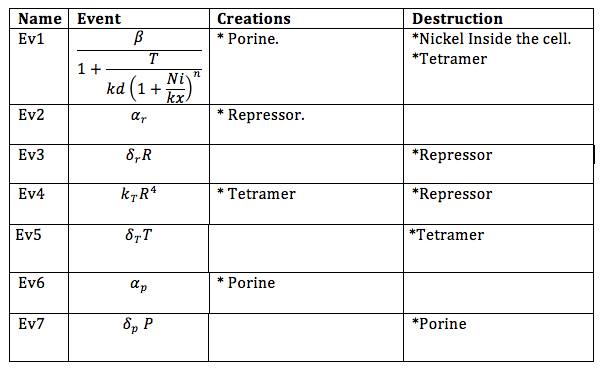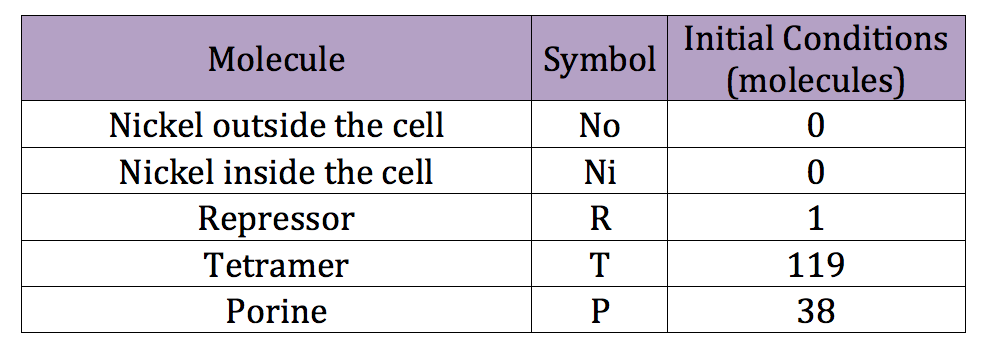Team:Colombia Uniandes/Stochastic
From 2013.igem.org
To develop the stochastic model for both projects the following assumptions were made:
The scripting is based in the steps explained in Colombia Team 2012 wiki.
Nickel removal system
The biochemical reactions carried out in living systems, specifically in cells, follow in general a stochastic process. Transcription, signaling networks and systems within a cell can be modeled and simulated in time as Markovian processes. Gillespie algorithm (see references) gives a stochastic simulation method of these kinds of phenomena and offers a good resolution with an efficient use of computational resources.
The advantage of this kind of modeling is that the differential equations that we use in the deterministic model can also be used in the stochastic model. However, in order to do the simulation for our Nickel Uptake system, we must start defining the parameters of the model in the correct units. For our purposes and the algorithm’s requirements, we need units of Molecules per unite of time (in our case, minutes). In the following table we show the parameters used for deterministic simulation and the stochastic parameters. The new parameters where obtained by using Avogadro`s number (6.02e23 molecules per mole) and an average cell volume of 10e-15liters.
Now, the different events that may produce creation/generation and destruction/elimination are specified as follows based on the differential equations:
We can run a similar code used in the deterministic simulation to obtain reasonable initial conditions for the stochastic simulation. However this time we introduce the new adequate parameters. The initial conditions obtained are listed in the next table
 "
"






